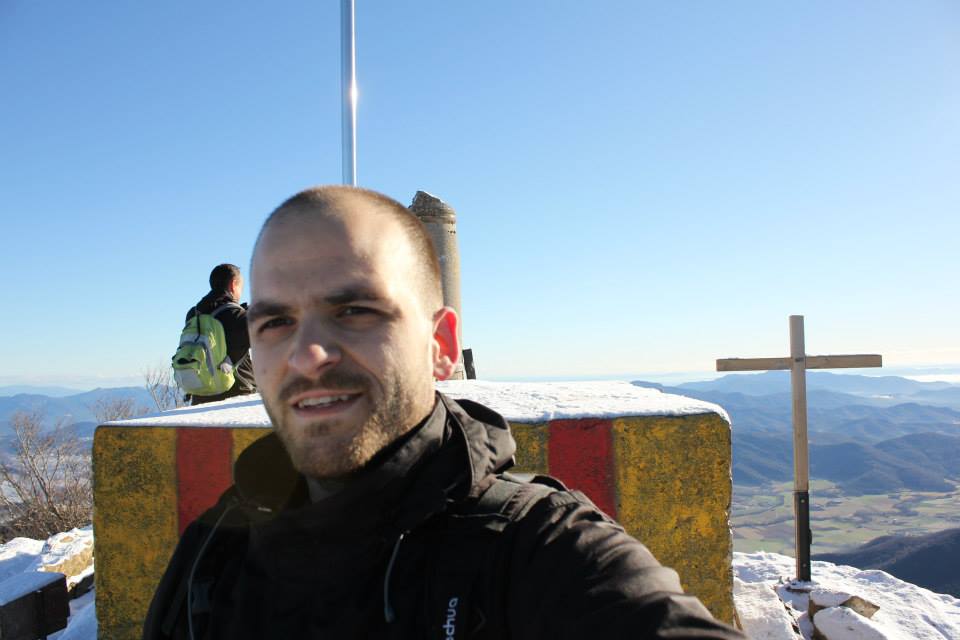 |
Dr. Santi Roca-Fabrega
Title: Post-doctoral researcher
Office: Kaplun 110, Givat Ram
Address: Racah Institute of Physics
The Hebrew University of Jerusalem
91904, Jerusalem, Israel
Phone: +972-(0)2-6584928
Fax: +972-(0)3-5744153
Email: santi.roca(at)mail.huji.ac.il
|
Main research interests:
Numerical simulations: cosmological simulations of galaxy formation with gravity and hydrodynamics, n-body simulations of individual galaxies, test particle simulations of galactic structures evolution (bars and spiral arms).
Galaxies formation and evolution.
Kinematics and dynamics of galaxies.
Milky Way galaxy structure, formation and evolution.
|
About me::
I was born in Sant Esteve d'en Bas (La Vall d'en Bas) on 1987, May 22.
I got my Graduate in Physics in June 2009 at the Universitat de Barcelona (UB).
I did my master degree in Astrophysics (September 2010) also in the Universitat de Barcelona (UB).
In November 26th, 2015 I defended my PhD thesis entitled "Milky Way-like Galaxy simulations in the Gaia era: Missing baryons and disk large scale structures", at the University of Barcelona. My PhD advisors were Dra. Francesca Figueras (DAM-ICCUB-IEEC, Catalonia) and Dr. Octavio Valenzuela (IA-UNAM, Mexico).
Currently I am working in the Racah Institute of Physics of the Hebrew University of Jerusalem, in a 3 years post-doctoral grant, in collaboration with Professor Avishai Dekel.
|
Master and PhD Thesis:
I presented my master thesis at the University of Barcelona in September 2010. The main topic of my research was the study of the effect of galactic spiral arms on the stellar kinematics of disk galaxies. We foccussed into analyse the vertex deviation observable. The vertex deviation is a combination of second order moments of the velocity distribution function. This observable gives information about the tilt of the u-v velocity ellipsoid.
To undertake such study we used test particle simulations of galactic disks (see Antoja et al 2009 for more information about test particle simulations used in this work) and pure N-body simulations of isolated disk galaxies obtained using the ART code (see Kravtsov et al 1997).
Our main result was the finding of a clear correlation in between sign changes of the vertex deviation observable and the position of the non-axisymmetric structure overdensities and underdensities. For more information about our results see my master work (in spanish).
My PhD thesis entitled "Milky Way-like Galaxy simulations in the Gaia era: Missing baryons and disk large scale structures" was presented in the University of Barcelona the 26th of November, 2015. In this thesis I worked in collaboration with Dra. Francesca Figueras Sinol (DAM-ICCUB-IEEC, Catalonia) and Dr. Octavio Valenzuela Tijerino (IA-UNAM, Mexico), that were my PhD advisors. The topics of this work were the study of the Milky Way galaxy large scale structures formation, their kinematics and dynamics and the search for observables that can be used to constrain their nature when data from ongoing surveys like Gaia will be available. For these studies we used test particle, pure N-body simulations of single isolated galaxies using ART and GADGET2 codes and cosmological simulations of galaxy formation using ART N-body plus hydrodynamics.
Results of this thesis can be find in the Roca-Fabrega 2013, 2014 and 2015 (see text just below this page). The PhD thesis manuscript can be downloaded from here.
|
Publications:
2015
GARROTXA cosmological simulations of Milky Way like galaxies - I. Hot gas and the missing baryons (in press).
2014
A novel method to bracket the corotation radius in galaxy disks: vertex deviation maps.
2013
On galaxy spiral arms nature as revealed by rotation frequencies.
|
|
